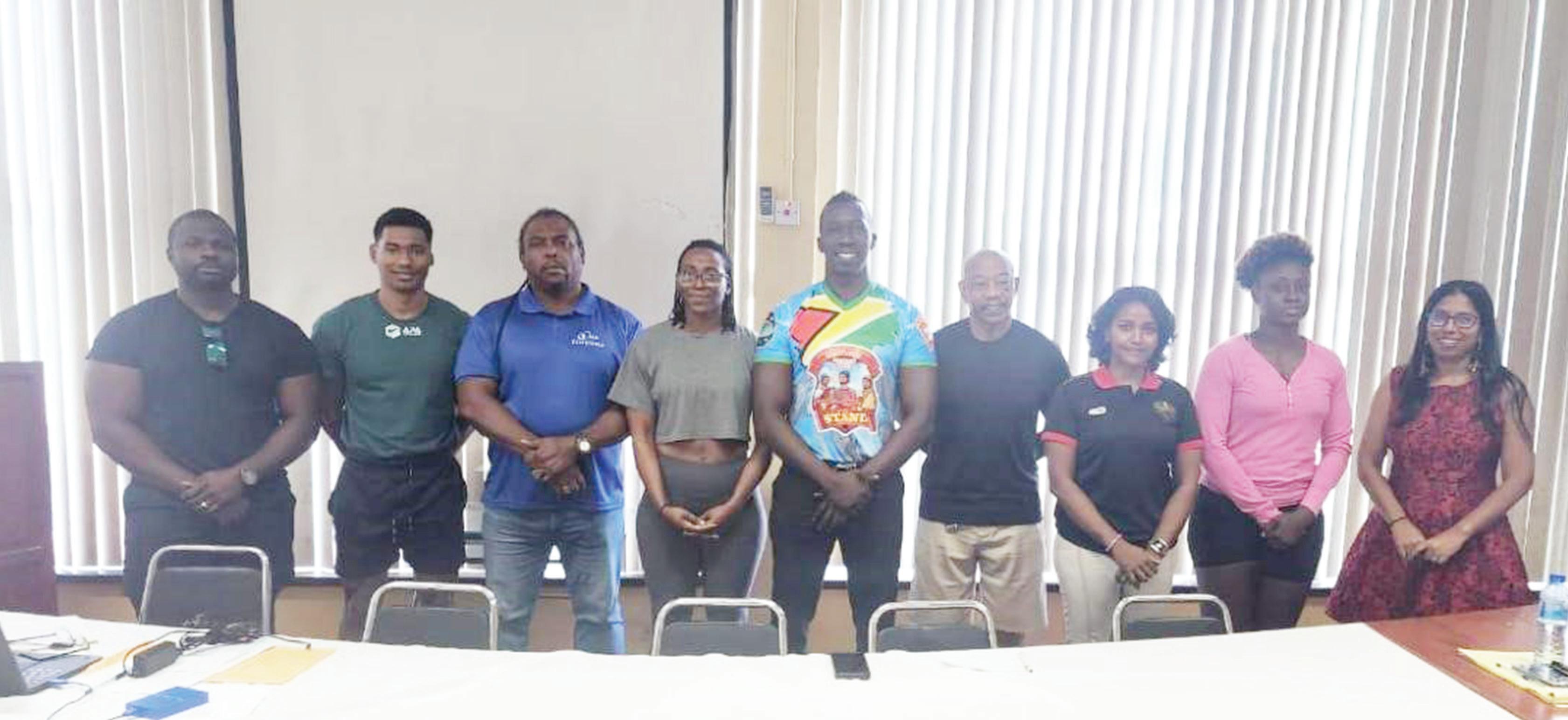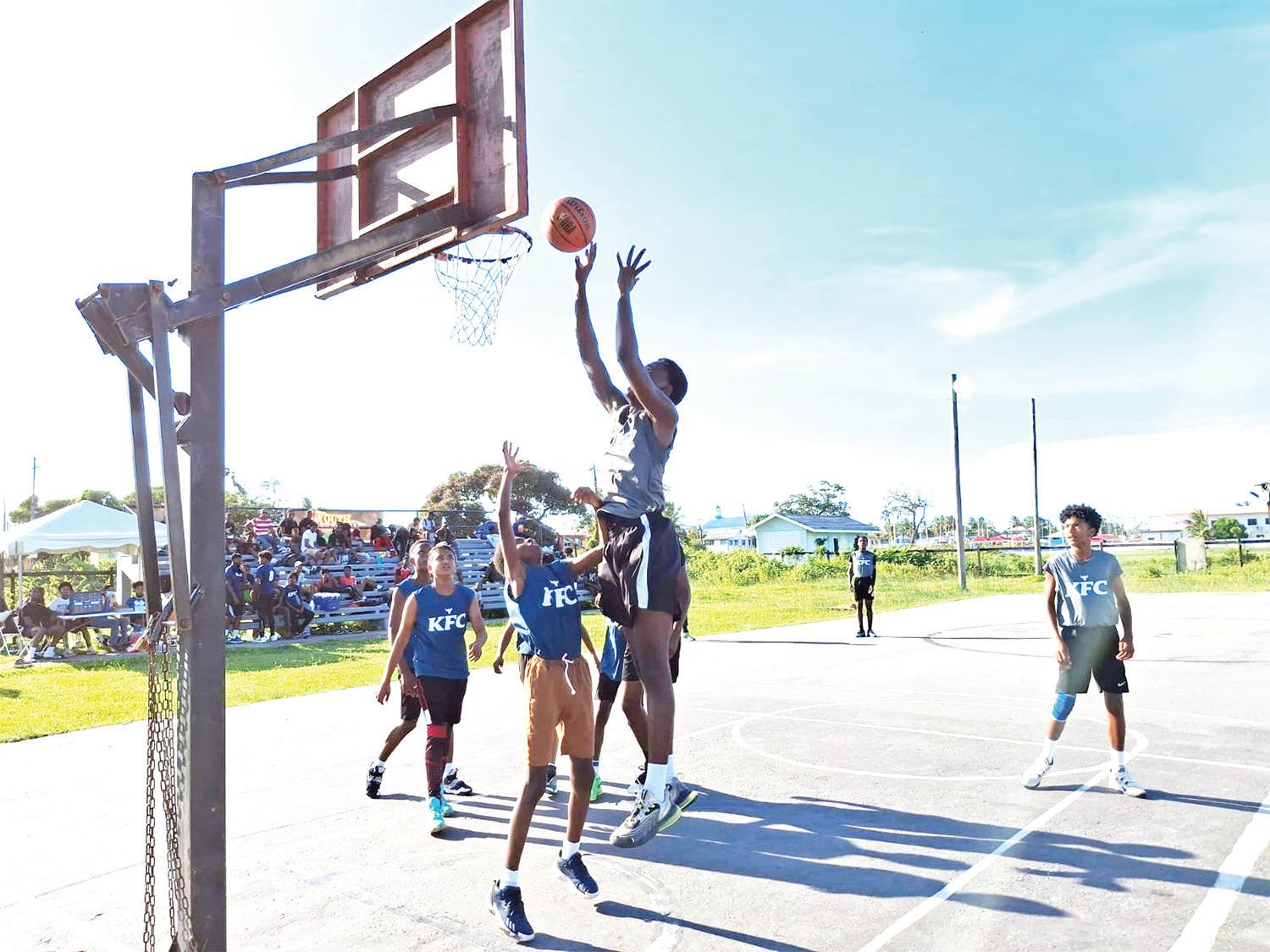








PRESIDENT Donald Trump said on Tuesday that he and top administration officials will review potential trade deals over the next two weeks to decide which ones to accept.
Trump and top officials say they are currently negotiating many economic deals with countries amid a trade war that has threatened the global economy, he said, adding that he expected results in the next two weeks.
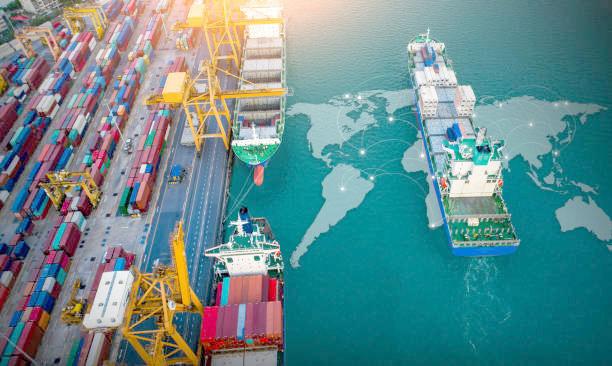

The comments came ahead of a bilateral meeting between Trump and Canadian Prime Minister Mark Carney, as the two long-standing allies are in a trade dispute.
Trump said that negotiations over the United State-Mexico-Canada Agreement may be renegotiated. The USMCA was inked during Trump’s first term and is set to expire next year.
However, Trump said he’s not exactly looking to extend the free trade agreement.
Trump said he’d consider a renegotiation of the trade deal but questions “if it’s even necessary.”
Carney followed up, adding, “It is a basis for a broader negotiation. Some things about it are going to have to change.”
China wants to negotiate a trade deal to end competing tariffs, Trump said.
“They want to negotiate, and they want to have a meeting,” Trump said.
“And we’ll be meeting with them at the right time.” (Reuters)
JOHN Bernard Boodhanlall, a 63-year-old driver of Onderneeming, Essequibo Coast, who was charged for Refusing to
Provide a breath specimen for a breath alcohol test to be done, has been fined $30,000.
According to the po -
lice, the man appeared at the Suddie Magistrate’s Court, on May 2 and pleaded guilty to the charge when it was read to him.
NAZIM Paul, a 29-yearold labourer of Charity Housing Scheme, Essequibo Coast, was charged for ‘Rape of a child under (16) years’.
According to a police release, he was granted bail
after he appeared in court to answer the charge.
The accused appeared at the Suddie Magistrate’s Court on May 2, 2025, and the charge was read to him. He was not required to plead to the indictable charge.
The prosecutor objected to bail; however, the accused was granted bail in the sum of $200,000, the release said adding that the matter has been adjourned until June 16, 2025.

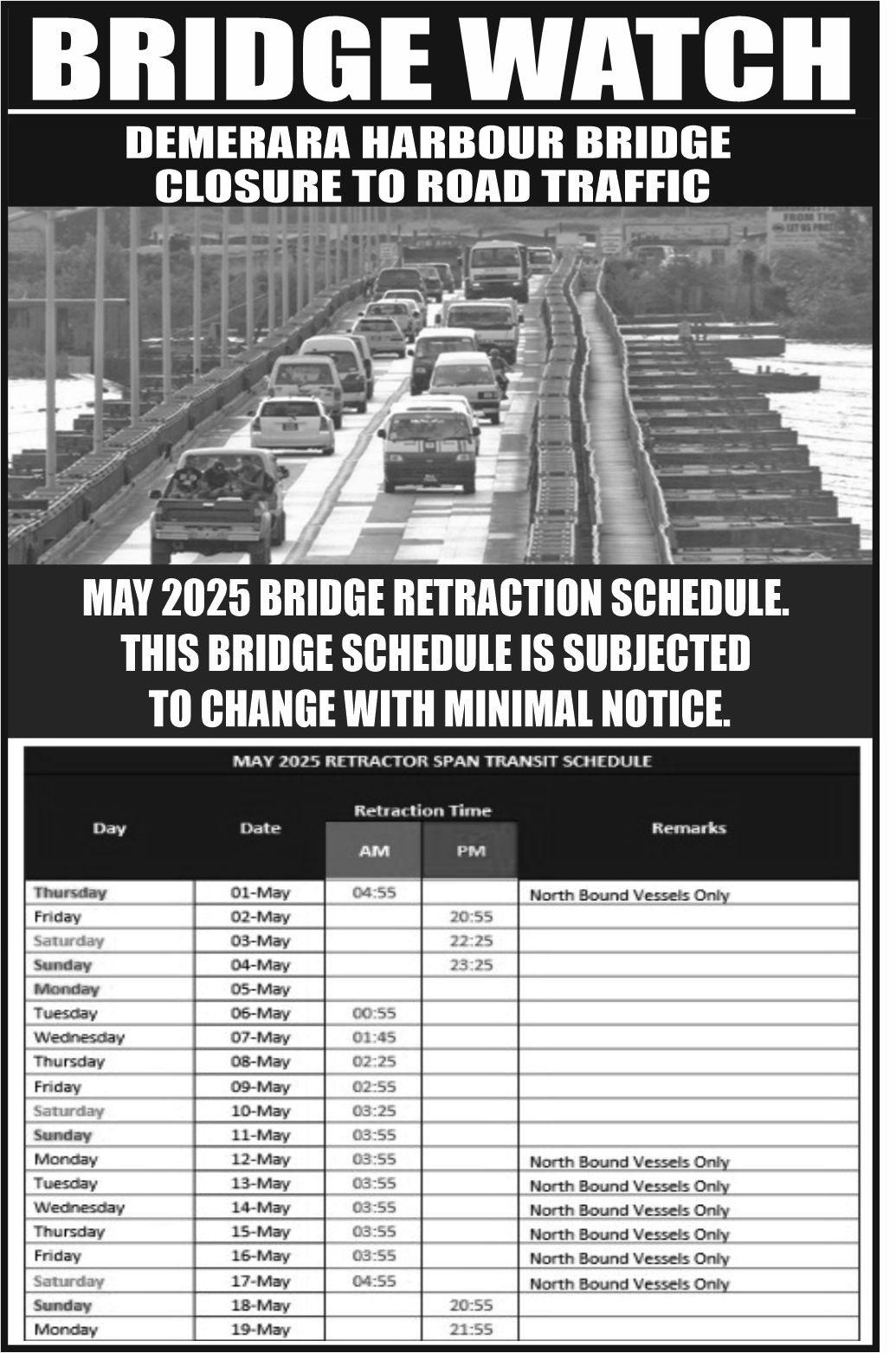


between 2015 and 2020.
The questionnaire covers five key domains: the legal framework; economic context; political context; sociocultural context; and safety.
Legal Framework: Guyana’s legislative environment concerning press freedom has remained largely unchanged over the past five years. Notably, in 2018, RSF improved Guyana’s ranking from 60 (in 2017) to 55, even though the APNU+AFC government had tabled its Cybercrime Bill, which contained a draconian sedition clause.
RSF’s North America Director, Margaux Ewen, publicly expressed concern that the proposed legislation “could have a serious, chilling effect on press freedom in Guyana.” Yet RSF nonetheless awarded Guyana a higher rating that same year.
Economic Context: This indicator assesses economic influences on journalism, including media ownership concentration, the use of government advertising as leverage, and the financial sustainability of independent outlets. It is fair to state that both public and private media in Guyana enjoy equitable access to government advertising. Furthermore, there are no restrictions on media ownership. Print and online media entities do not require licences, and radio and television licences are granted by the Guyana National Broadcasting Authority (GNBA).
Sociocultural Context: This dimension considers social norms and cultural pressures, including gender-based discrimination and self-censorship driven by religion, ethnicity, or societal taboos. While journalists in Guyana may not enjoy the same prestige as their regional counterparts, they are generally respected. Ours is not a society that is inherently hostile to media practitioners. Admittedly, women in the media may occasionally face harassment, but such behaviour is symptomatic of deeper, entrenched societal attitudes towards women, rather than indicative of the media environment per se.
Political Context: Criticisms have been levelled at successive governments for their control over state media – a practice consistent across political administrations. Given that this state of affairs has remained unchanged for decades, it should not
rom page 6
influence fluctuations in the press freedom ranking. It is worth noting that fewer than 10% of all media outlets in Guyana are state-owned or controlled, leaving approximately 90% insulated from direct political interference. Media freedom extends to the extent that certain outlets regularly refer to senior government officials, including the President and Vice President, in derogatory terms without fear of legal or other repercussions.
Safety: As previously mentioned, there are no credible reports of journalists in Guyana being detained, assaulted, or killed. However, depending on their affiliation, media workers may occasionally face verbal abuse, particularly in highly charged political environments – a situation not unique to Guyana.
Editor, it is difficult to reconcile the fact that from 2015 to 2025, Guyana has dropped 24 places in the Index, despite the operational conditions for media personnel remaining largely stable, if not improved.
It becomes even more perplexing when one considers Jamaica’s 2025 ranking (26), especially given that its qualitative indicators are arguably comparable to Guyana’s, while its quantitative indicators are demonstrably worse. For instance: on May 8, 2024, a female journalist in Jamaica was threatened with rape by a supporter of the People’s National Party (PNP); in 2024, the RJR Gleaner Group faced a public campaign accusing it of political bias, with calls for boycotts by prominent politicians; and in September 2023, the offices of Nationwide News Network were attacked in a shooting incident. It is, therefore, evident that the scores and rankings of this Index are not the result of an “independent assessment” by RSF in the conventional sense, as the organisation does not deploy field researchers to conduct empirical assessments. Rather, the Index relies heavily on the subjective opinions of individuals – most of whom seem intent on misrepresenting the reality of press freedom in Guyana.
Yours faithfully,
Ravin Singh Former Journalist

FOLLOWING the unwarranted April 28 acid attack on pupils and teachers of the Chateau Margot Primary School on the East Coast of Demerara, Divisional Commander Assistant Commissioner Khali Pareshram has said that the probe remains active.
cameras (CCTVs) which captured the incident.
When contacted, he told the Guyana Chronicle that although no arrests have been made, investigators are still processing footage from close circuit television
Reports are that while the teachers and pupils were on their way home, one of two men on a motorcycle threw a corrosive substance believed to be acid, on them.


The children and teachers were taken to the hospital and treated and sent away, but the burn marks are still visible on their faces and other exposed parts of their bodies.
After the incident, President, Dr Irfaan Ali met with
those affected and assured them that those responsible will be brought to justice.
The Ministry of Education has also condemned the attack.
“The Ministry of Education unequivocally condemns any form of violence against students, teachers, or any member of the public.
Schools and their environs should be safe spaces for learning and development to take place, and any act that threatens this sanctity will not be tolerated,” a statement noted.
IT can be said that Guyana’s economic transformation began with the Russian-trained economist and the architect of the country’s fiscal reforms, Dr Bharat Jagdeo. Appointed as the Minister of Finance in 1995 by the late President, Dr Cheddi Jagan, DrJagdeo served for four years until 1999 when he was elevated to the presidency.
As the Senior Minister of Finance, Dr Jagdeo embarked on implementation of the National Development Strategy aimed at expanding the economy, agriculture, mining and fishing sectors, and improved the well-being of the people, especially those at the lower end of the economic ladder.
It was a far-reaching structural adjustment programme which liberalised the economy, and returned it to a path of robust growth, so much so, that between 1991 and 1999, Guyana experienced positive rates of growth of GDP each year, except for 1998.
During this period, pivotal financial reforms were implemented which stabilised the economy and reduced the massive debt-burden ratio by half which, at the time, stood at 900 percent of GDP.
Finance Minister Jagdeo was also instrumental in negotiating with the Inter-American Development Bank, Guyana’s principal donor, to cancel the country’s US$467 million debt, which at the time was equivalent to 21 percent of GDP.
Duly elected as President for two terms as mandated by the constitution, Dr Jagdeo
was not an ordinary Head of State. He was an exceptional, astute and clever leader who brought tremendous economic and social progress to the country.
Under his presidency, Guyana experienced a huge increase in the standard of living and life expectancy; economic stability; and the distribution of over 100,000 house-lots. Guyanese also had greater access to water, electricity, mortgage loans, and not to mention education and healthcare services.
These accomplishments did not occur by mistake or overnight, it took the efficient and effective management of the nation’s financial resources and the wizardry of Dr. Jagdeo to stabilise Guyana’s economy, reduce the massive debt burden and produce growth and development in almost every sector.
In terms of protecting the environment, the former Head of State was in the forefront of preserving the country’s rain forest and combatting climate change.
With 40 million acres of untouched rainforest in Guyana, Dr. Jagdeo worked passionately to establish a partnership with Norway to pay for the protection of the country’s rain forests through the sale of carbon credits in order to reduce greenhouse gas emissions from deforestation and forest degradation.
His heroic and dauntless efforts to protect the environment and his commitment to safeguard the rain forest and climate change mitigation has inspired collective action on a global scale. In 2009, he gained recognition within the country and in the international community.
In 2010, then President Jagdeo was conferred with the prestigious title of “Champion of the Earth” by the United Nations for his steadfast and remarkable leadership in sustainable development, green growth, and climate change. He had previously been recognised as one of Time Magazine’s “Heroes of the Environment” in 2008. The Champion of the Earth award is an annual programme established by the United Nations Environment Programme (UNEP) in 2005 to recognise outstanding environmental leaders.
Following the PPP/C’s victory in 2020, Dr Jagdeo joined the Dr Irfaan Ali-led administration as Vice President responsible for the oil and gas sector. Despite a barrage of criticisms from the opposition and others, he has been working steadfastly to improve the economy and the well-being of all Guyanese.
During the last five years, he has worked closely with President Ali and the Cabinet to create jobs, increase salary and wages for public/ civil servants, and encourage foreign investors into the country.
It is fair to say that his experience and his academic background laid a solid foundation for his role in helping to shape the country’s oil and gas sector.
Dr Jagdeo’s political journey is marked by determination, vision, confidence, decisive leadership, resilience, and unwavering commitment to the well-being of the nation, and economic and social development of a free Guyana.
Sincerely, Dr. Asquith Rose
DEEMING a recent press release issued by the A Partnership for National Unity (APNU) as “malicious, untruthful and factually incorrect,” Glenroy Fraser of Belladrum Village has called on the party to withdraw it.
On Tuesday, the APNU alleged that Mag-
istrate Ravindra Mohabir displayed political bias and acted under the influence of a government minister. The party also mentioned Fraser’s court matter in its release.
In response, Fraser expressed outrage and made it clear that the matter before the Weldaad Magistrate’s Court is
separate and completely unrelated to the illegal protests and unlawful activities that occurred in West Berbice on the evening of April 28, 2025.
“As a matter of fact, I have an ongoing court matter since September 11, 2024, with Ivan Reynolds, a known PNC activist who struck me
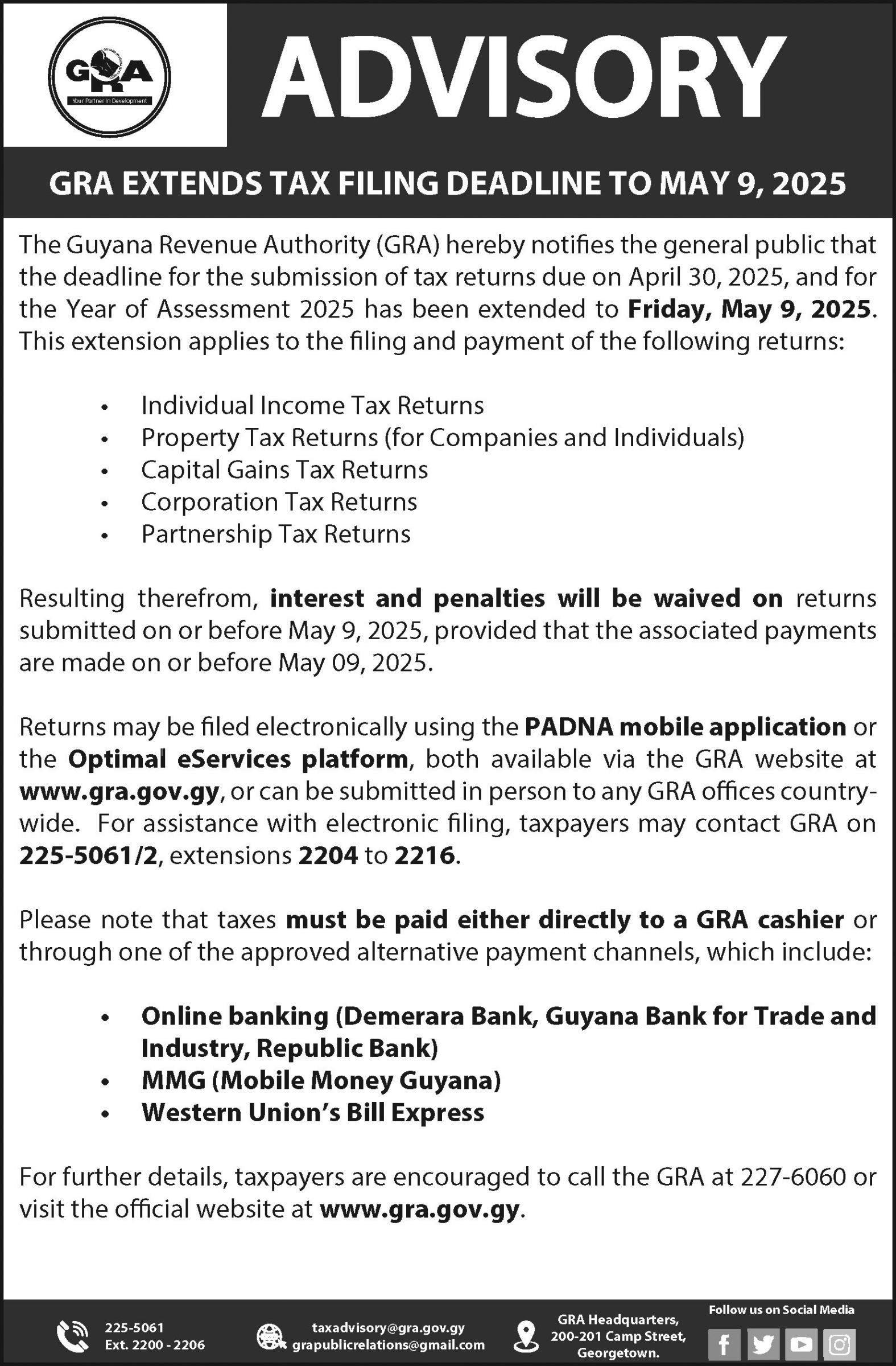
on my head whilst I was conducting my itinerant business at Belladrum Secondary School compound on September 11, 2024,” he clarified.
He said that the matter is currently before the court and both parties are on bail as the case is being tried. “Therefore, I had no reason to have
spoken to anyone, including any member of the government. I am well represented by a legal counsel.
“Nothing, absolutely nothing to do with illegal protests and the ensuing unlawful activities,” he said.
Fraser further stated: “In this regard, I
would be grateful for the APNU to withdraw their malicious, untruthful and factually incorrect press release implicating me in protests and violence, which for all intents and purposes, were spearheaded by them in my community on that fateful evening.”
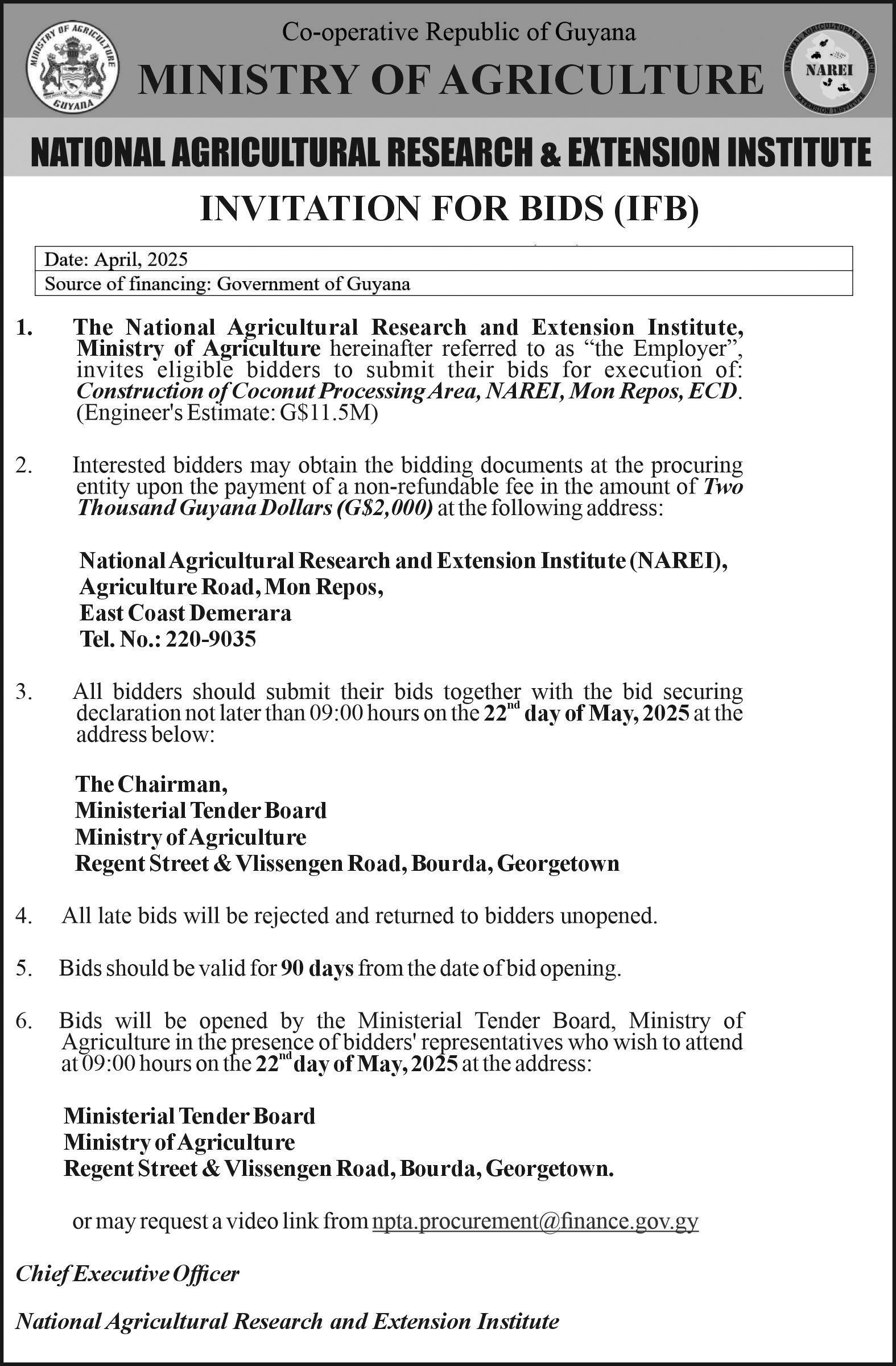
THE salty air of the Atlantic carries more than just the scent of the sea for the hardworking men and women of Guyana’s seabob industry.
Their livelihoods are in-
tricately tied to this small crustacean that is a delicacy-- locally and internationally. But ensuring that every ounce that is caught meets the high-quality safety and standard that the market
demands is important as it journeys from the boat to our plates. Preparing the seabob itself is not easy.
“Cleaning shrimps [sic] does bore your fingers and people prefer to buy the
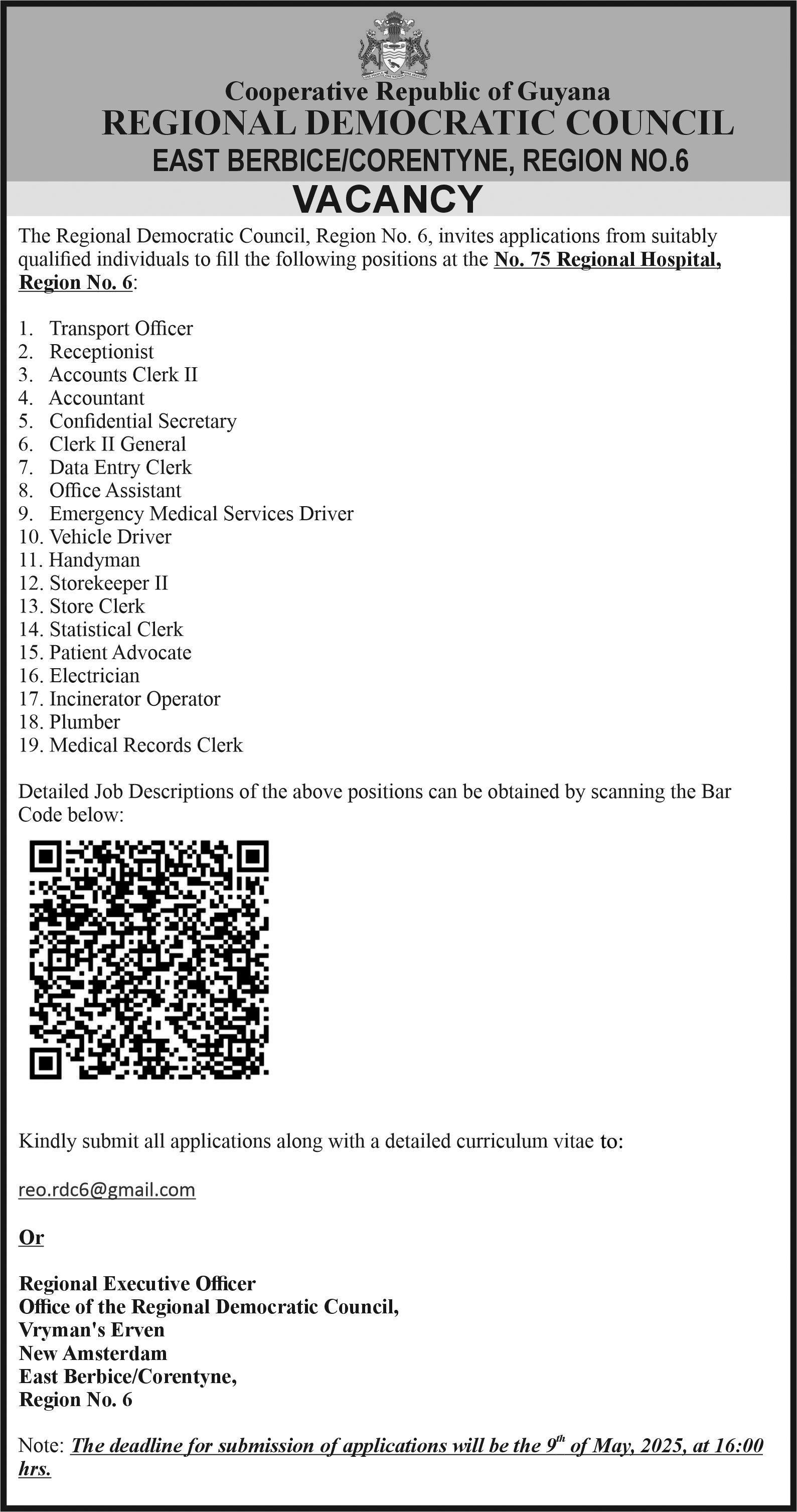
freshly picked shrimp,” says Bhagmatie Omar, a fisher, vendor, and processor.
She explained that seabob is very delicate and has to be cleaned and sold quickly or kept frozen without the head. Handling it, she explained,
processes. The training emphasised crucial initial steps for maintaining catch quality and freshness from the moment it leaves the water.
Participants also gained a deeper understanding of food-safety hygiene, includ-
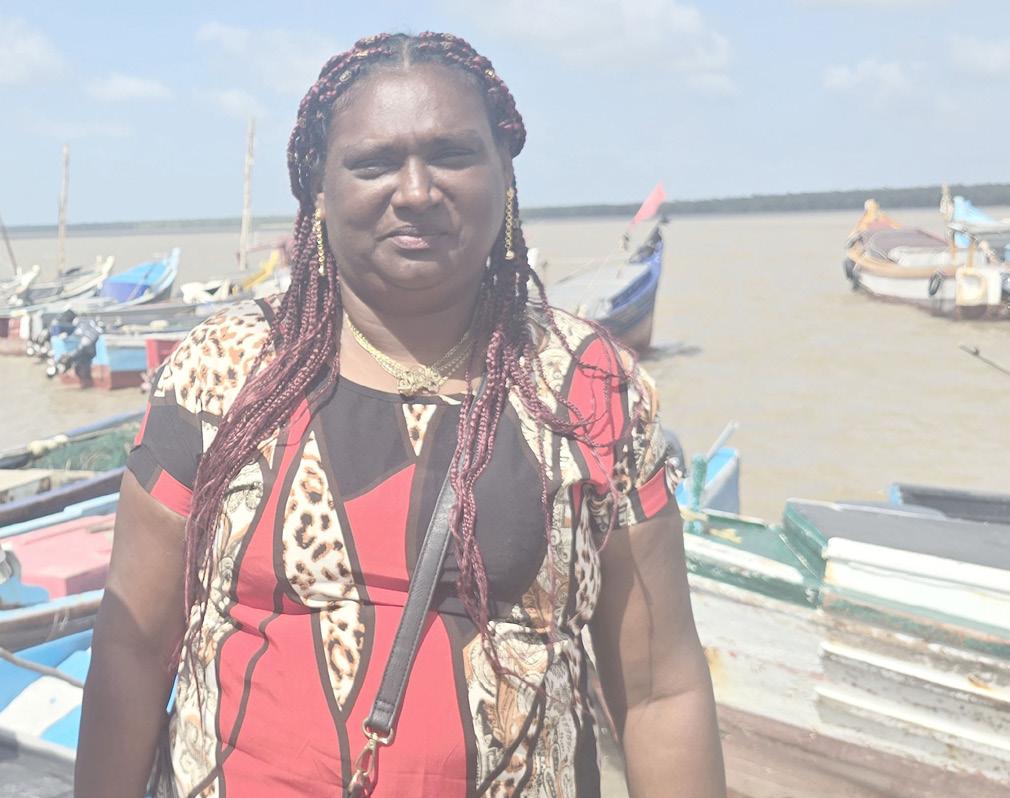
is very difficult; “it is better when we wear gloves, masks, aprons, and long boots, because the process can damage our skin.”
Under the FISH4ACP initiative, funded by the European Union (EU) and the German Federal Ministry for Economic Cooperation and Development (BMZ), and implemented by the Food and Agriculture Organization of the United Nations (FAO), food-safety training and personal protective equipment (PPE) was provided to smallscale fishers of Three Door Koker and Rosignol, Region Five.
And it seems that the training has made improvements in the participants’ seabob icing and handling
ing environmental, physical and biological factors affecting seabob quality during its transit to consumers.
For many, they have learned simple yet effective strategies for minimising losses, which potentially increase their earnings and reduce waste.
The training provided clear guidance on best practices, empowering these dedicated individuals to handle seabob in a way that not only preserves its quality, but also ensures they use protective wear to protect themselves at all times.
Safina Iqbal, a vendor for over 25 years, who sells cleaned seabob at the Rosignol market on Fridays and Saturdays, said, “I’m getting
accustomed to using PPEs. The gloves do make cleaning a bit harder, but they protect my hands from the water and ice.”
She added that the communal spirit is encouraging, “we buy catch from fishers and share among vendors so that everyone can have an income, and we are learning to do things together differently.”
Overall, strengthening the fishers,’ vendors,’ and processors’ ability to improve their practices will help them to be more competitive, enhance the appeal of their product and help them to access more lucrative markets.
Banmattie Vanbrook, former Chair of the Three Door Fish Cooperative and a fisher, vendor, and processor, reported that the training has helped her reduce post-harvest waste. She further noted a positive shift, with more vendors implementing improved storage and handling practices since the training.
Banmattie and other members are now seeking additional support for improved co-op management, which aligns with the next phase of the FISH4ACP Project launched to strengthen fish co-operatives. With each newly acquired skill and commitment to this arduous sector, smallscale fisherfolk are becoming stronger links in the value chain.
However, much more support is needed to ensure the unwavering spirit of the fishing community dedicated to this livelihood activity is sustained for future generations.
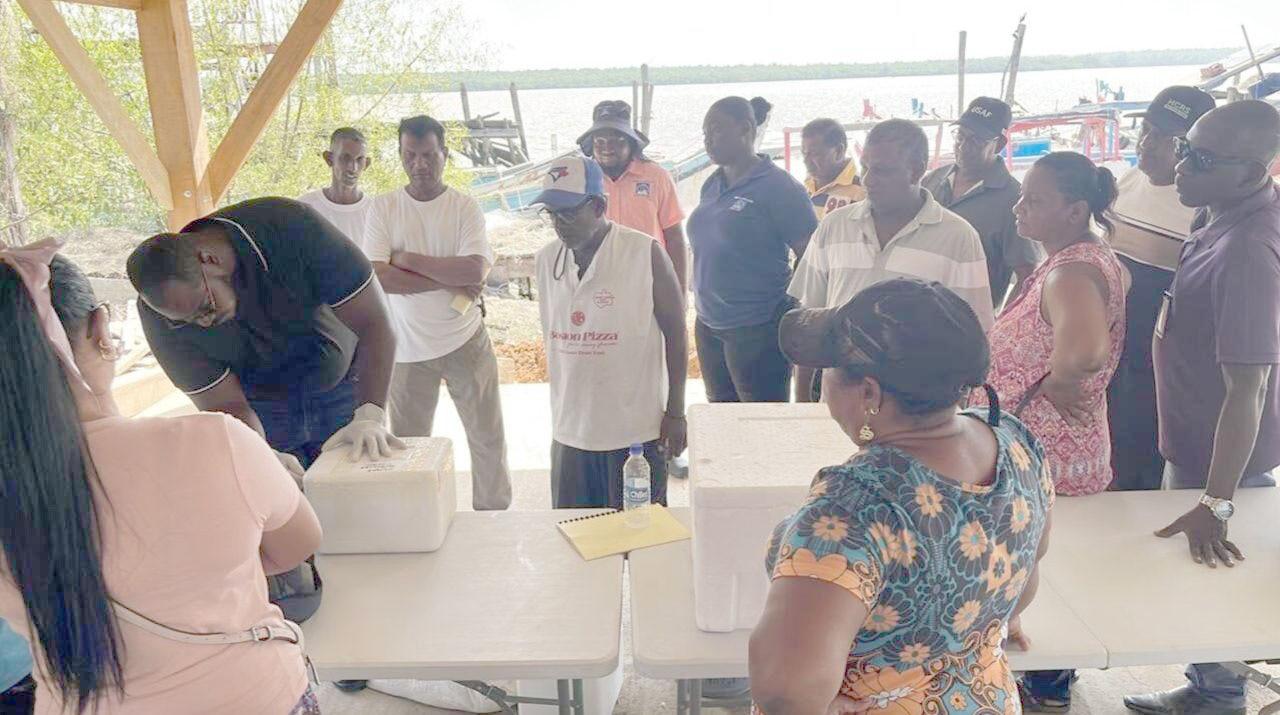
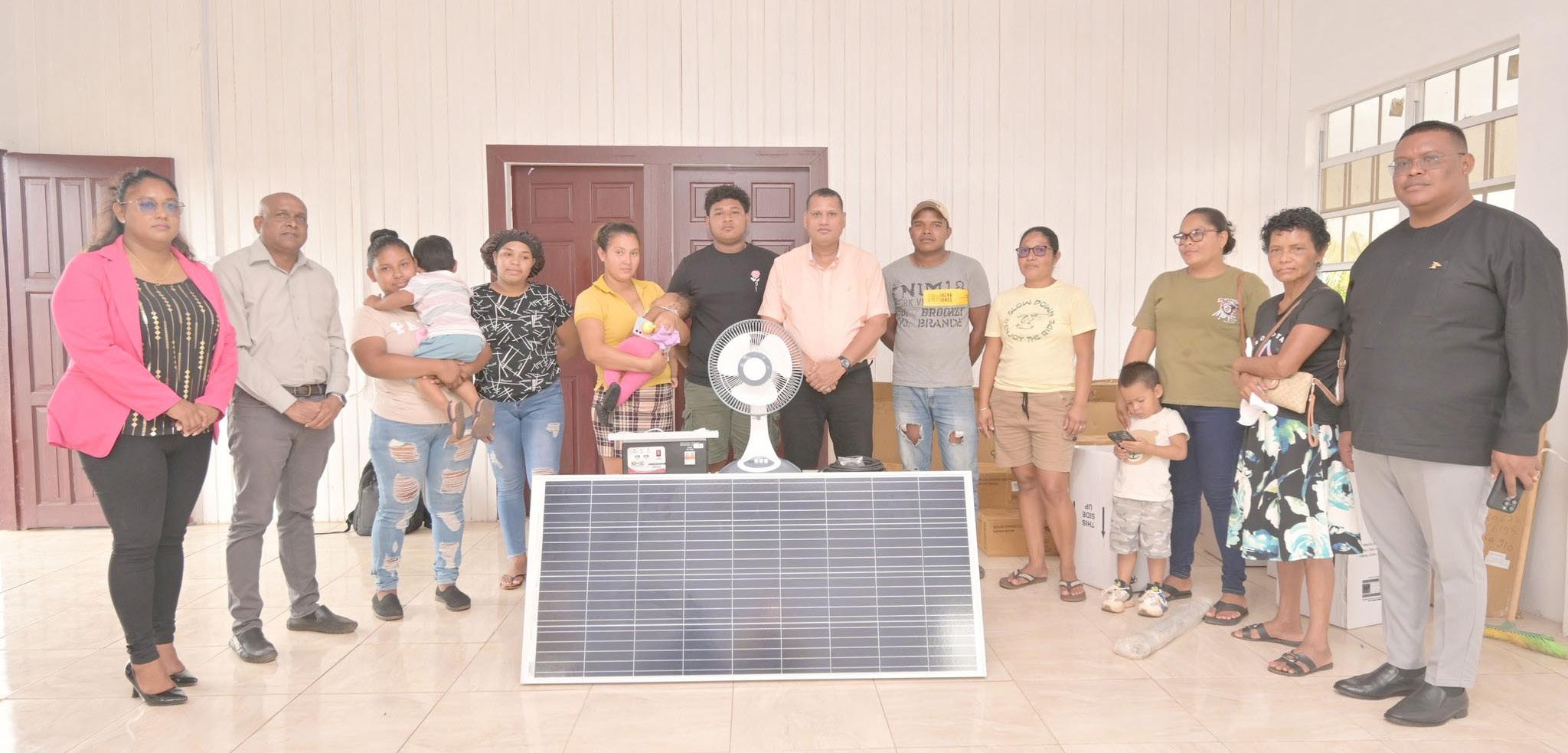
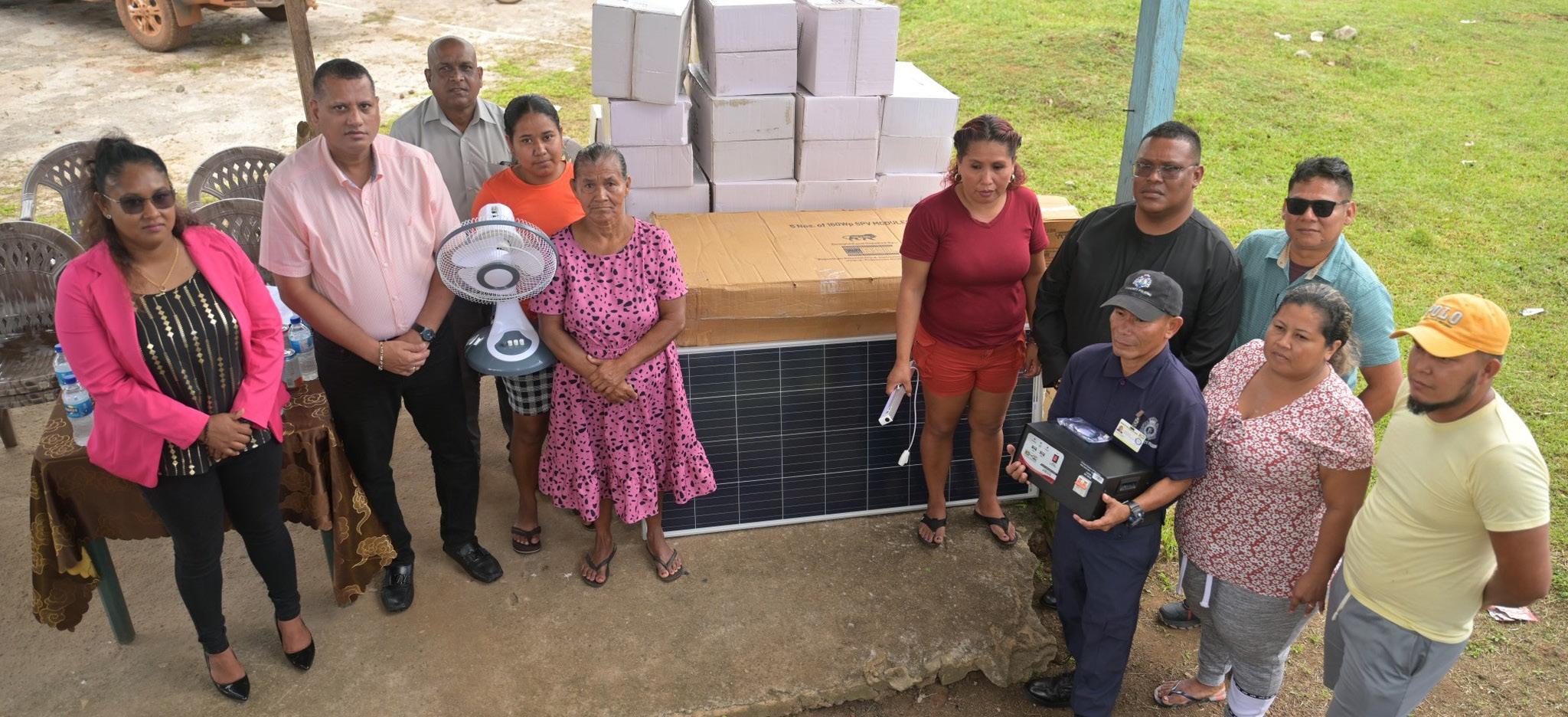

THE distribution of solar systems in Region One (Barima-Waini) continued on Tuesday, bringing improved access to electricity for 84 households across the communities of Bumbury, Wanaina, Barabina, and Thomas Hill in the Mabaruma sub-district.
According to information from the Ministry of Housing and Water, the initiative is part of the government’s
ongoing commitment to bridging the energy gap in hinterland regions. Minister of Housing and Water and Parliamentary Representative for Region One, Collin Croal, led the distribution exercise.
He noted that the initiative is aimed at ensuring all households including those previously missed, are adequately served.
During the visits, Minister Croal also announced
plans to improve water supply in the Mabaruma sub-district, which includes a new water system for Bumbury to address longstanding issues with water access.
Joining the minister at the distribution exercises were Regional Chairman, Brentnol Ashley, Regional Vice-Chairperson, Annansha Peters, and Regional Executive Officer, Sewchand.
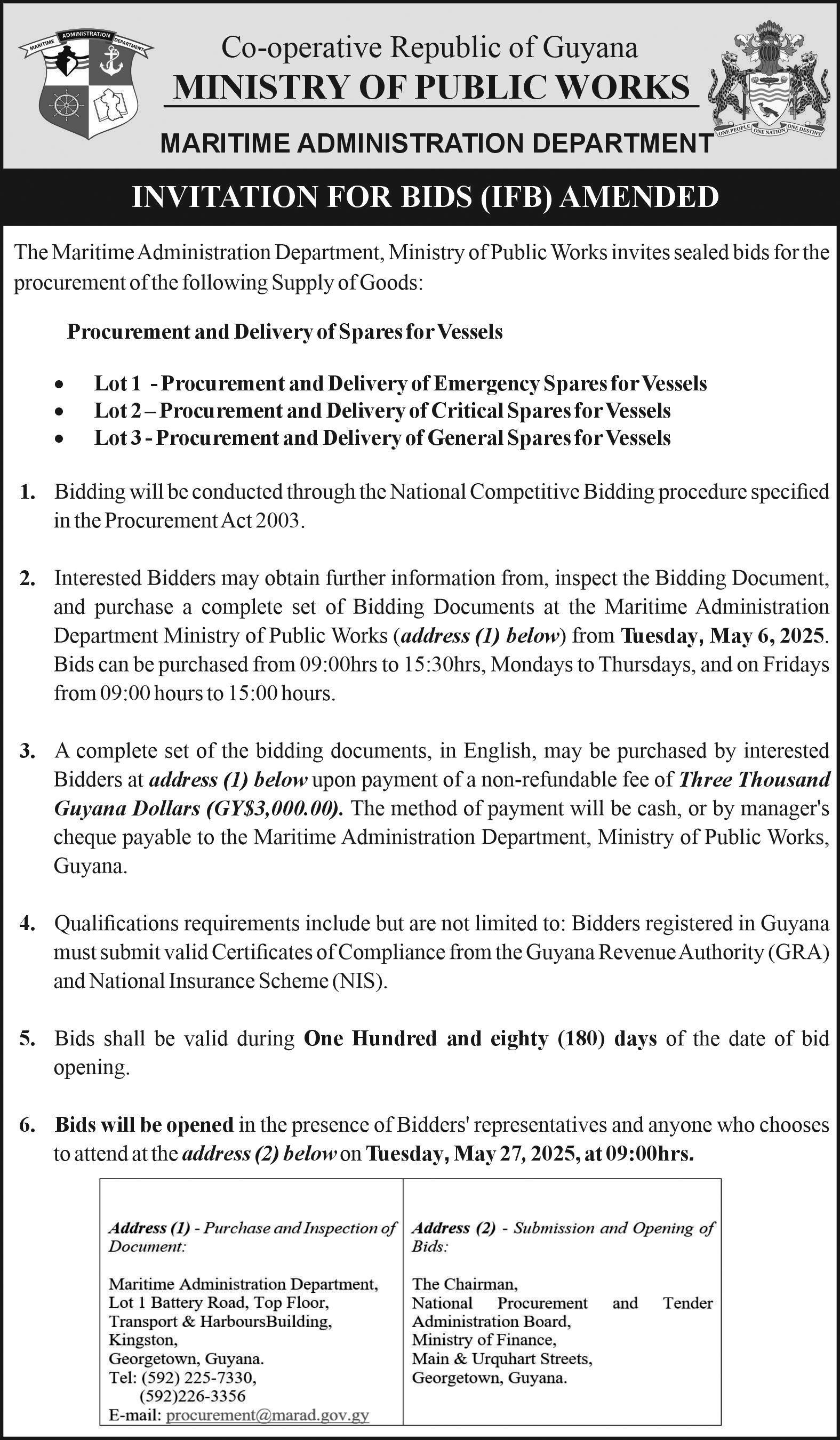
FOR many years, the Machushi Amerindians of Karasabai in the South Pakaraimas have longed for legal ownership over the vast savannahs and forests they have called home for generations.
After five years of uncertainty, that dream finally became a reality during the 2024 National Toshaos Council (NTC) Conference
hosted in Georgetown at the Arthur Chung Conference Centre (ACCC).
After long years of anticipation, Karasabai received its Certificate of Title from the government through the Ministry of Amerindian Affairs. This milestone for Karasabai represents the administration’s wider efforts to formally recognise lands that belong to thousands of
Amerindians nationwide.
“It was something that we really wanted for a very long time,” said Karasabai’s Toshao, David Albert, after receiving his land instruments from President, Dr Mohamed Irfaan Ali in 2024.
Speaking with the Department of Public Information (DPI) on this milestone, Toshao Albert recalled that under the previous admin-
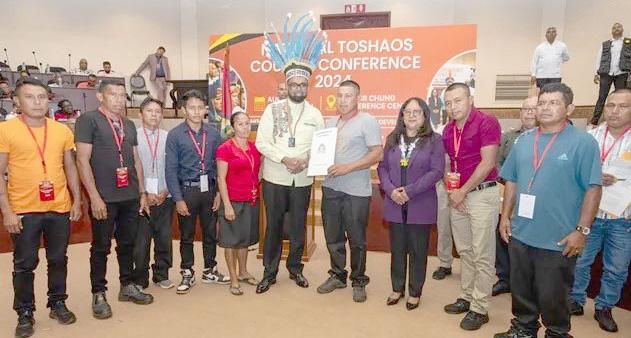
istration, from 2015-2020, Karasabai was one of many villages that were promised legal ownership of their ancestral lands. However, that did not come to fruition since Amerindian land-titling activities were paused, with little to no action taken.
And according to him, “It is only when President Ali took over [government] and we were promised, and
he got it done under his administration. Now we know where our boundaries are.”
With the legal title secured, Toshao Albert said the community is exploring agriculture and tourism. Additionally, through a collaboration with Conservation International Guyana, and guided by the Village Sustainability Plan, they are planning how to use carbon-credit funds
responsibly through mapping exercises to determine zones for conservation, hunting, and farming.
Karasabai Village joins a growing number of villages across Guyana that have gained legal control over their lands since the People’s Progressive Party/Civic (PPP/C) administration assumed office in August 2020. The resuscitation of
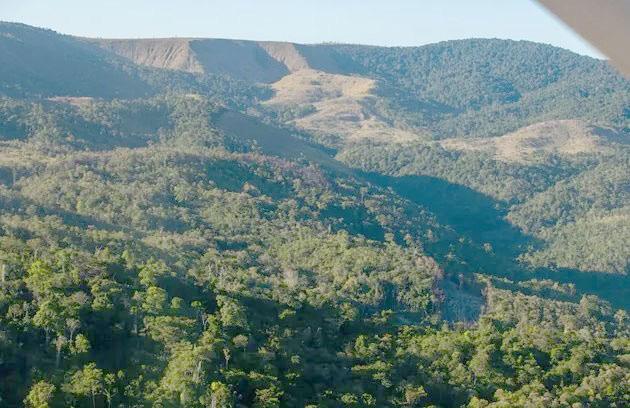
Since 2020, 16,174 Amerindians in total have benefitted from legal land security, with the number increasing rapidly through accelerated action

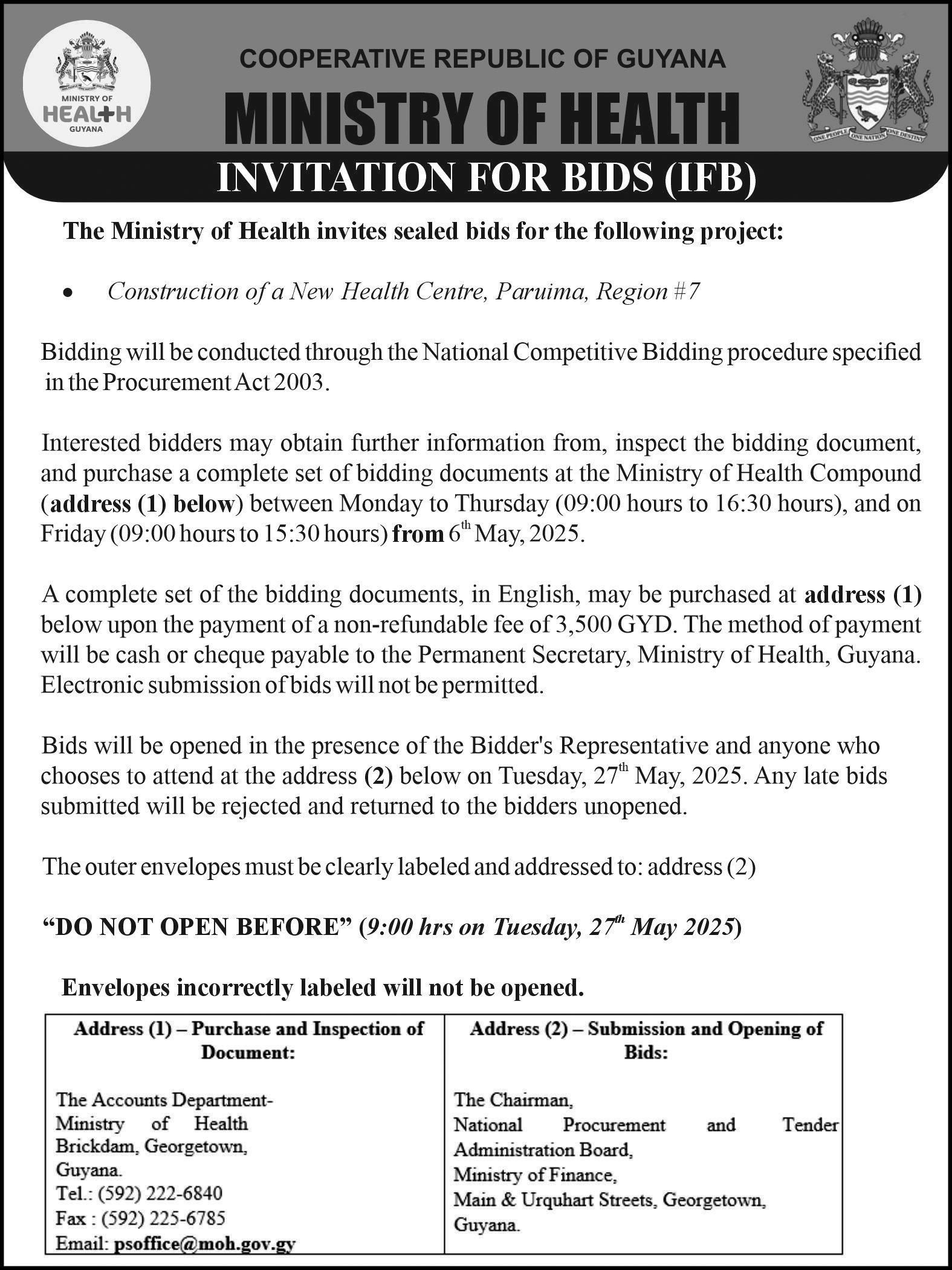


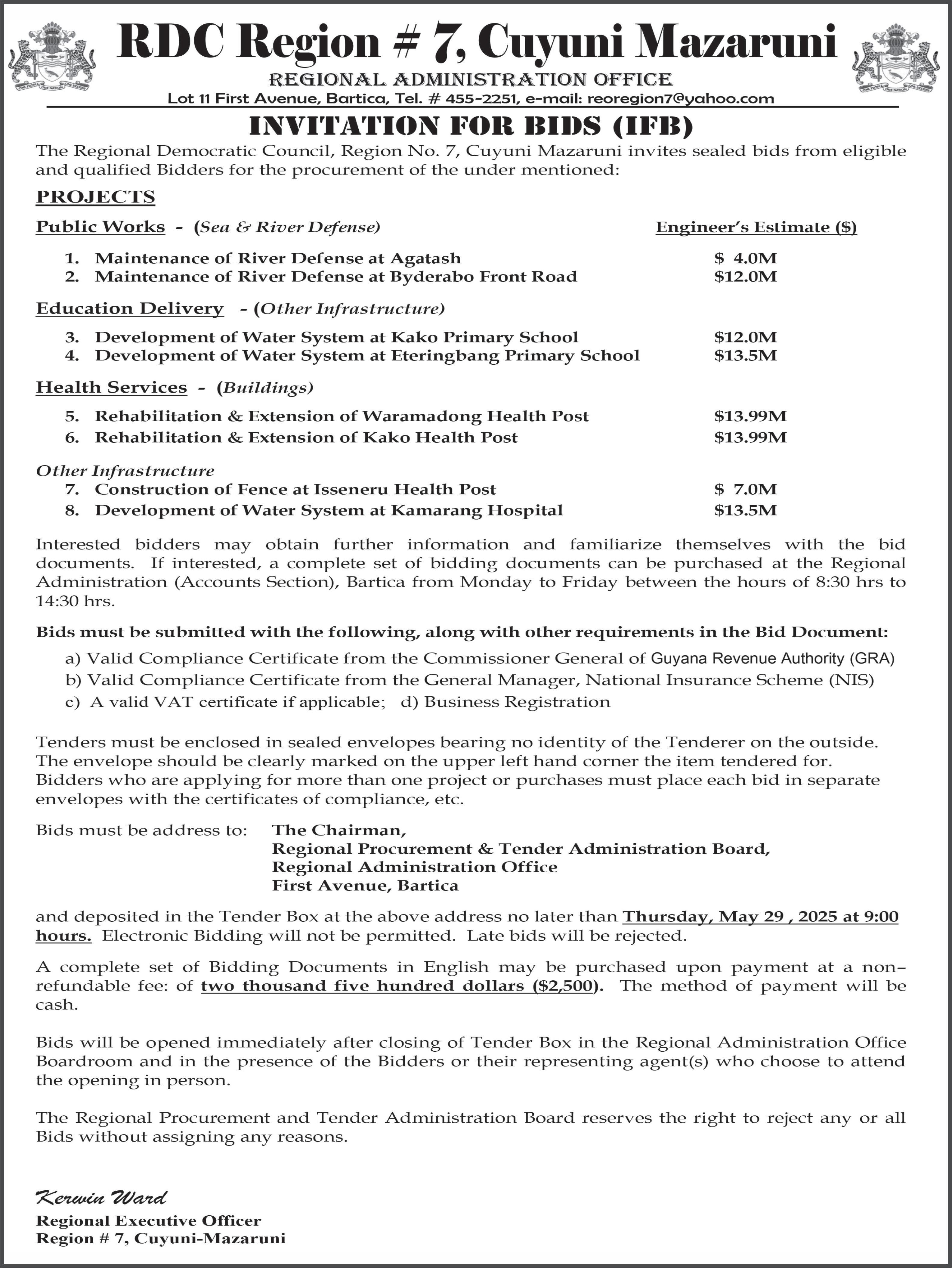
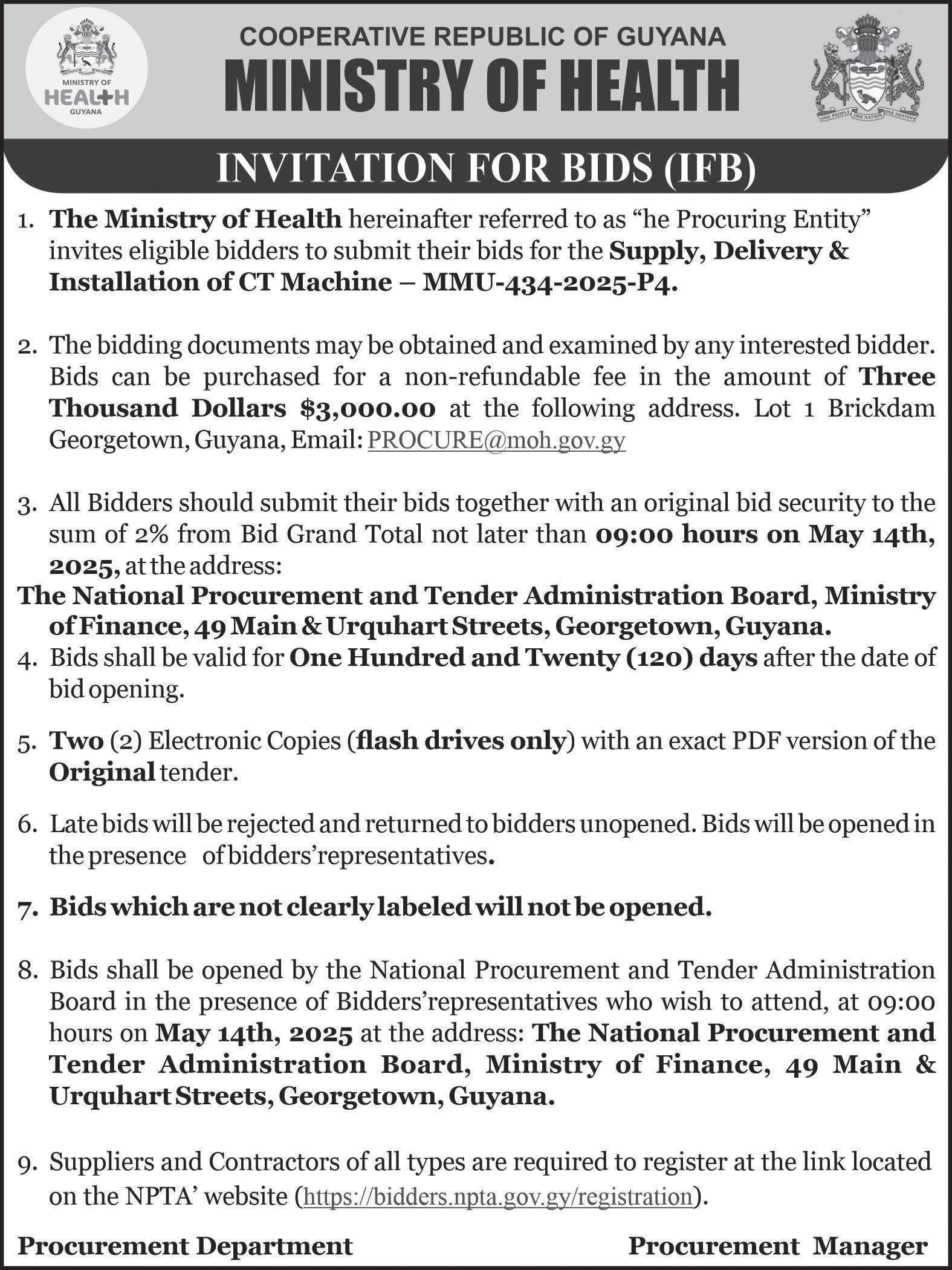
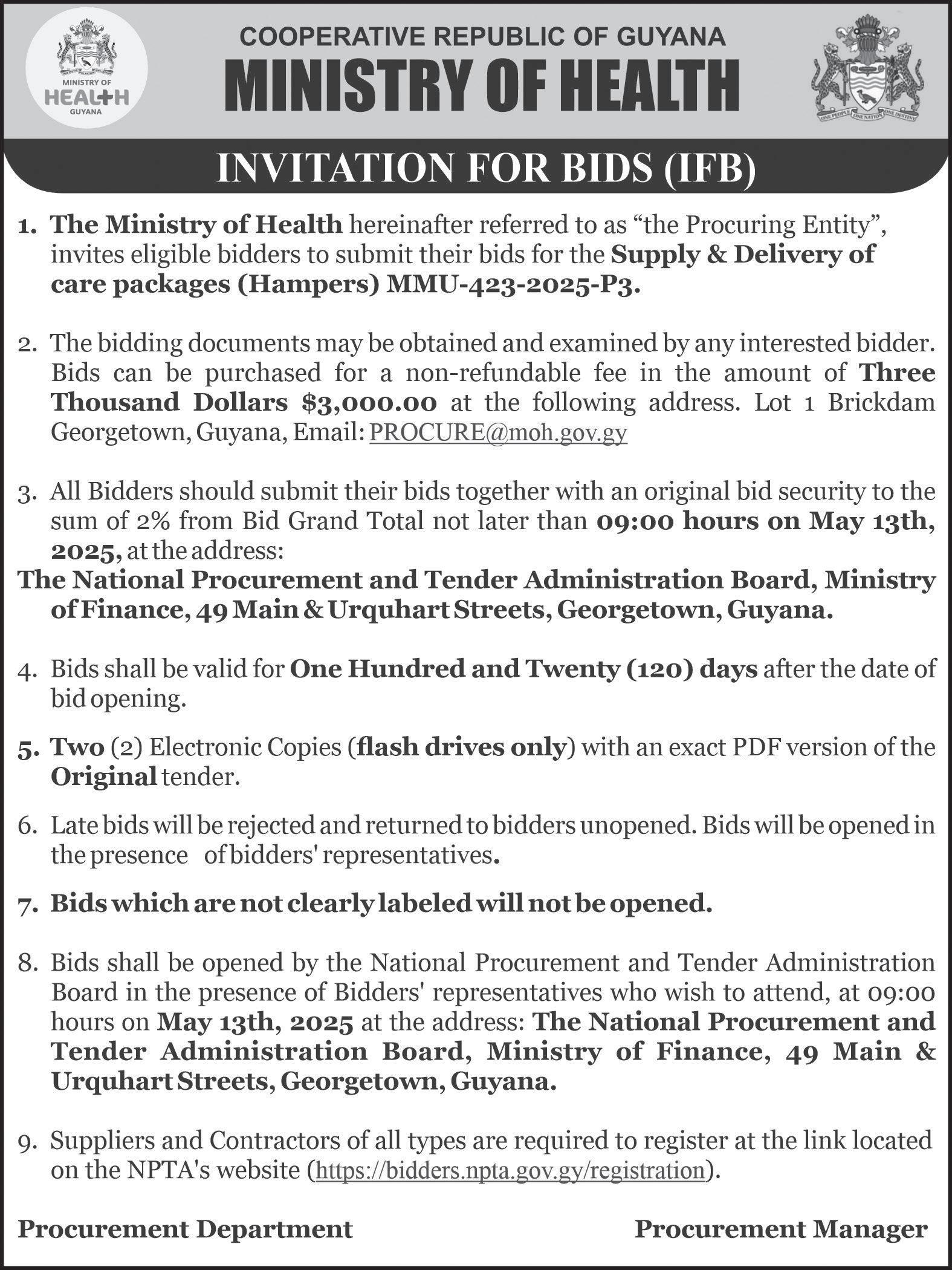
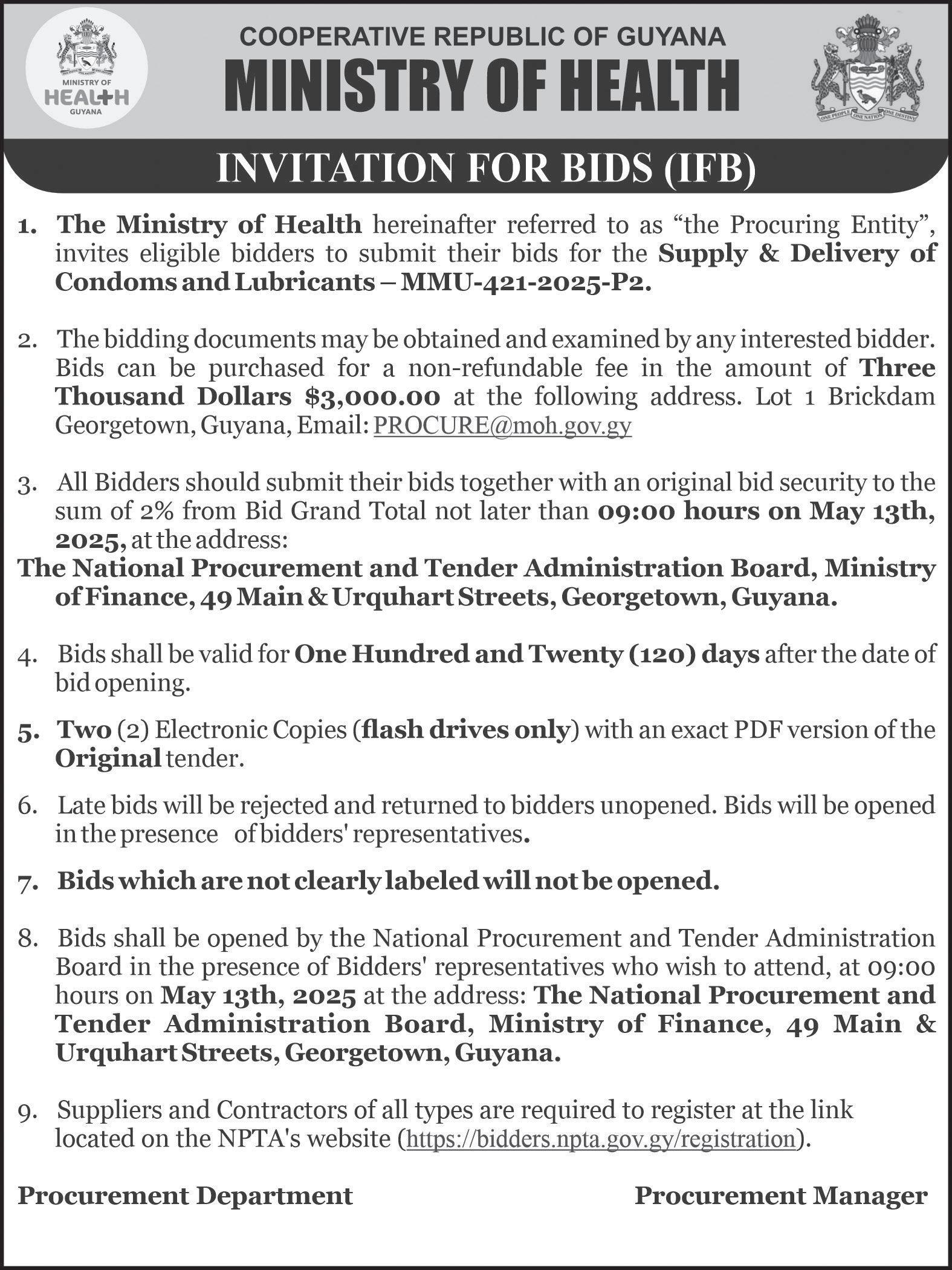


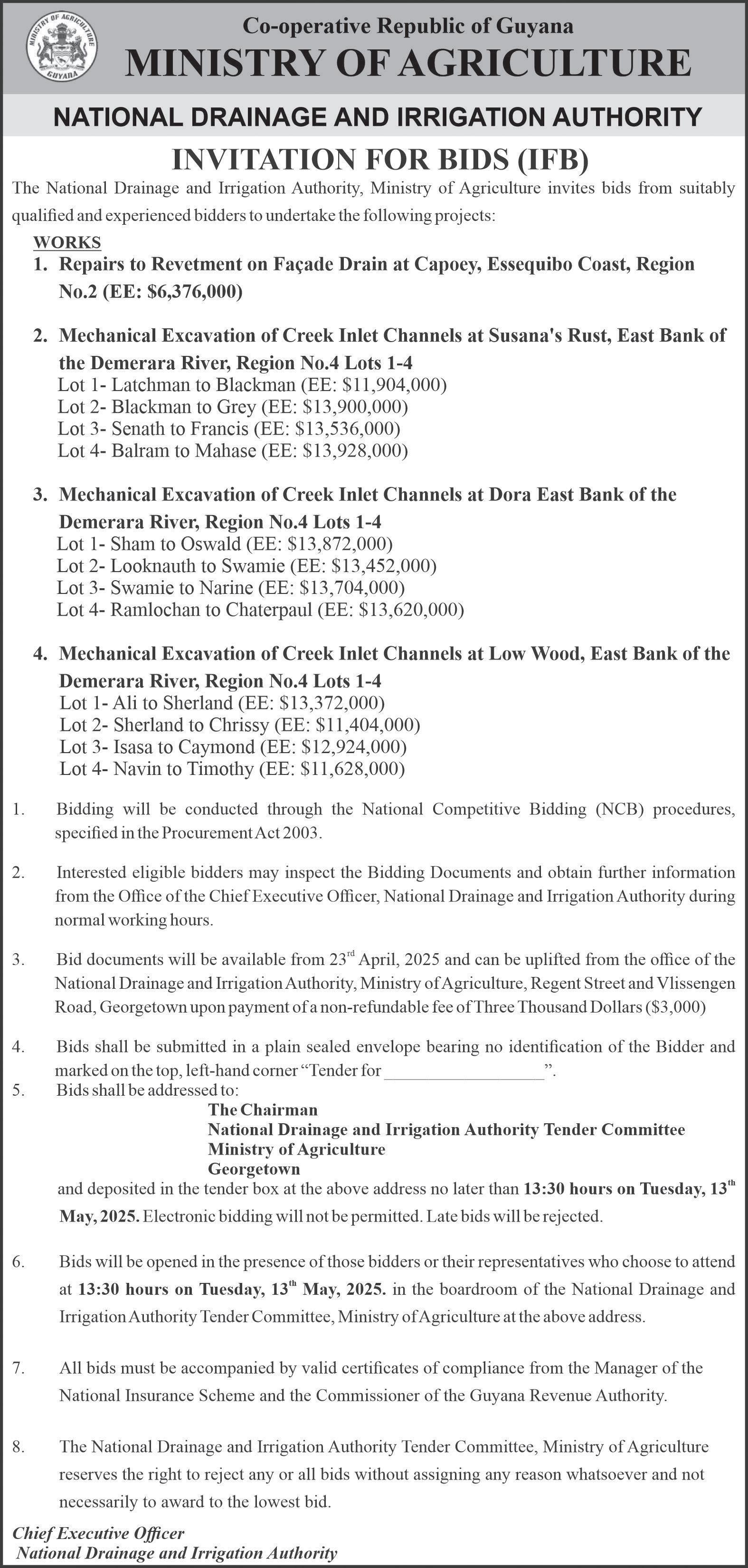
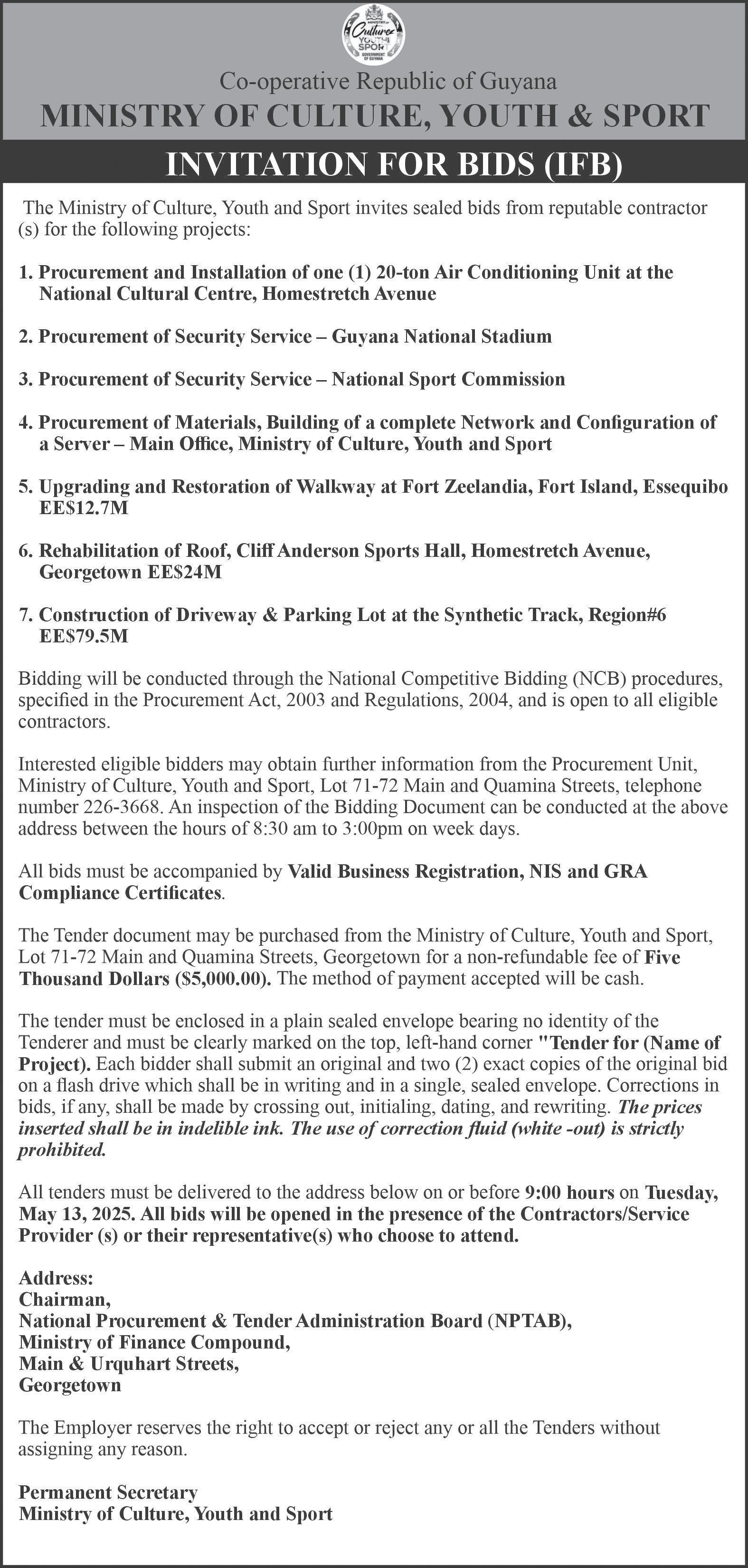
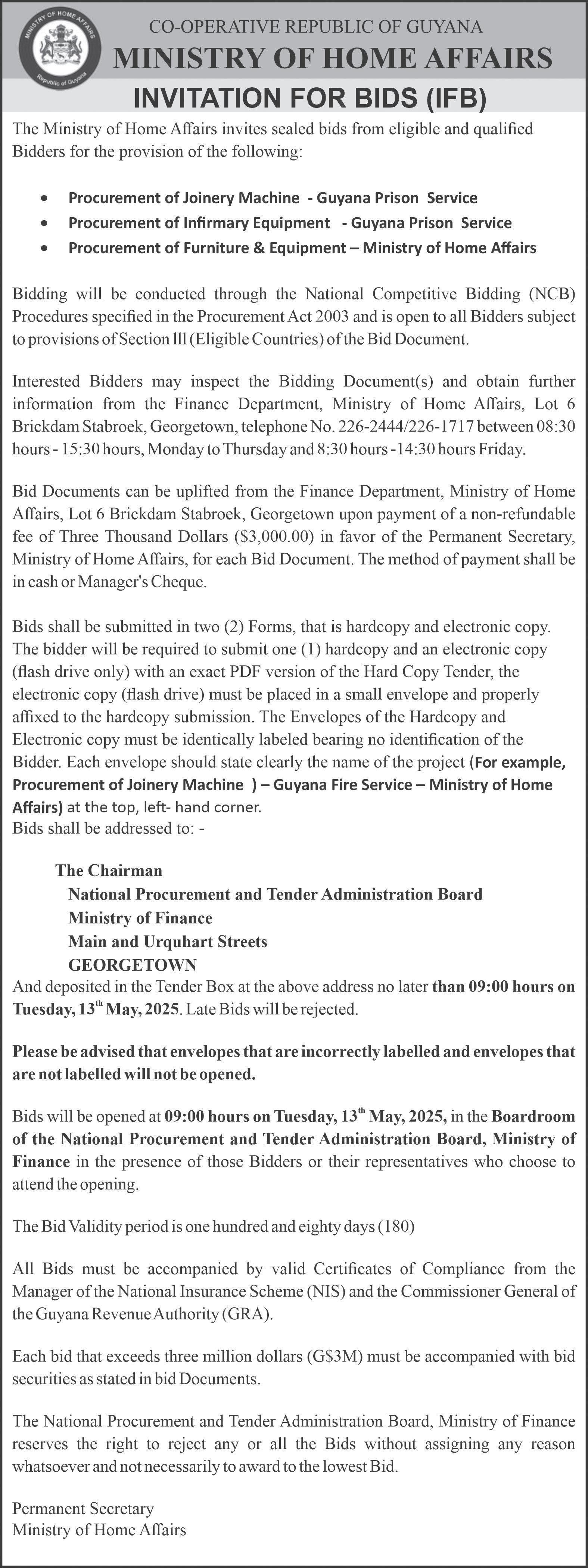


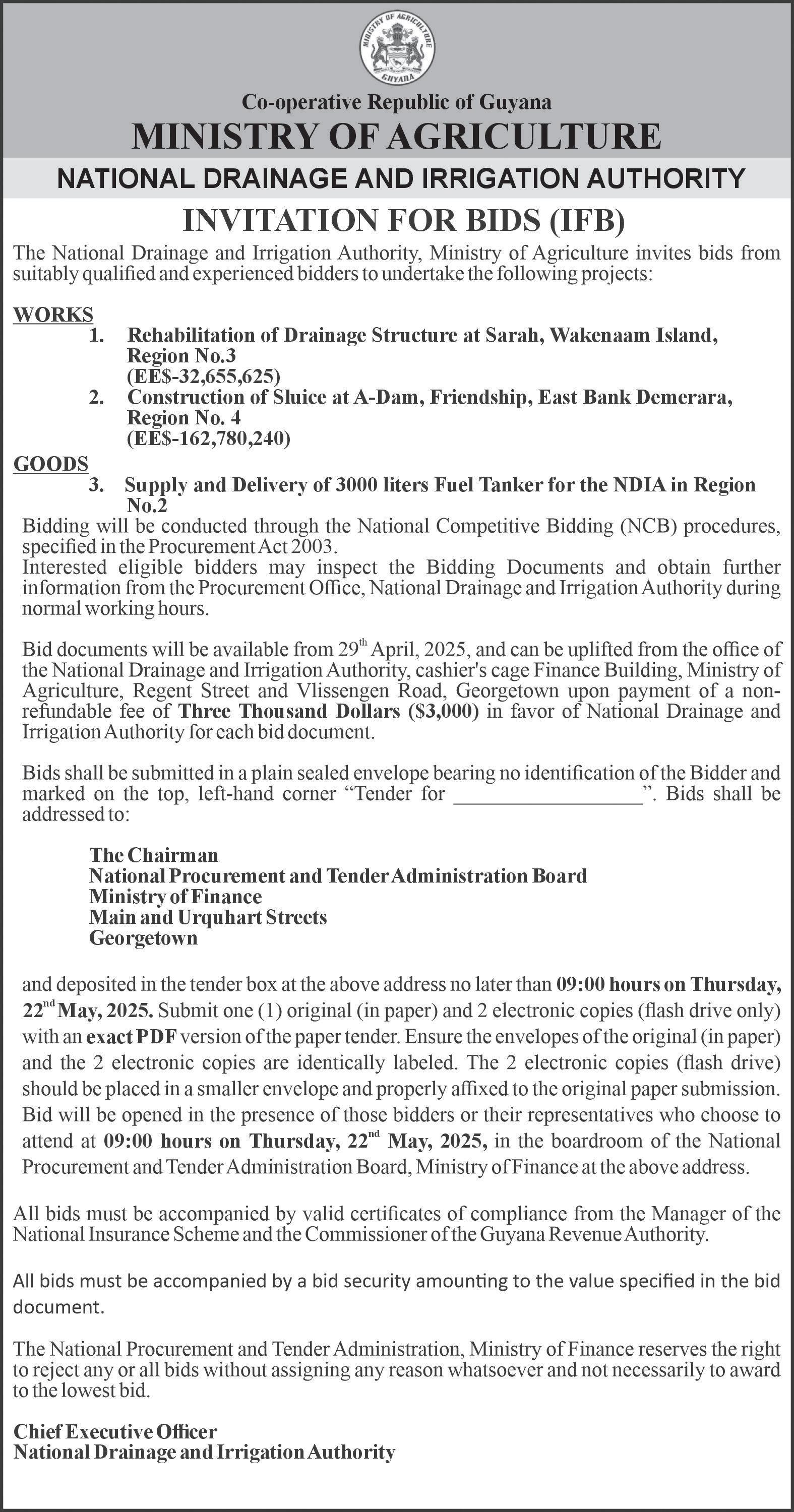
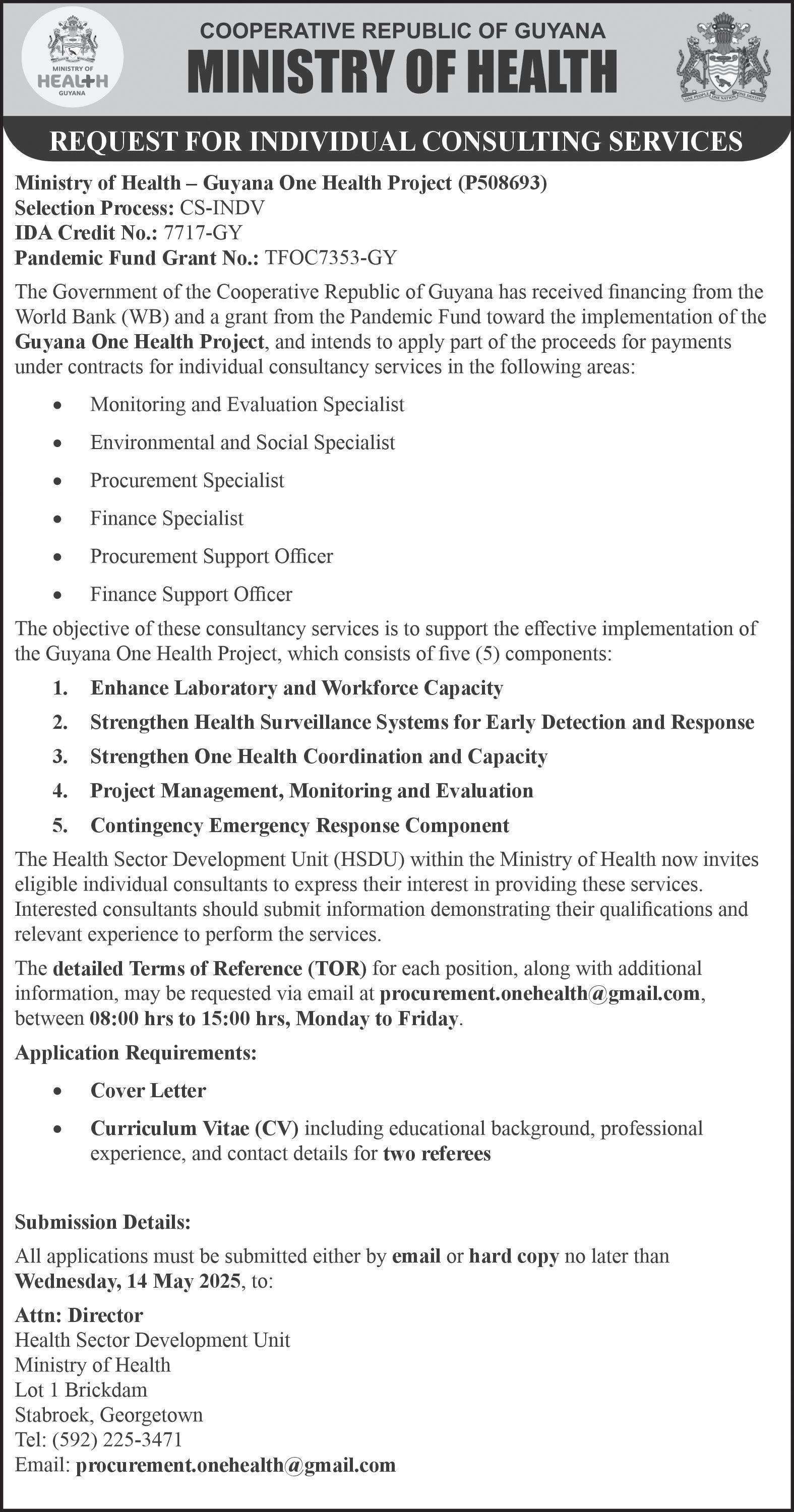



SOUTH AFRICA
RACING TIPS
GREYVILLE
08:15 hrs Eventidor
08:50 hrs Sundance Kid
09:23 hrs Drive By 09:58 hrs Sunshine Day 10:35 hrs African Prince
ENGLISH RACING TIPS
CHESTER
08:30 hrs Ali Shuffle
09:05 hrs Redorange
09:35 hrs That's Amore
10:05 hrs Square
10:40 hrs Bob Mali 11:10 hrs Sea Suite 11:45 hrs Spirit Genie
NEWTON ABBOT
08:45 hrs Heltenham
09:15 hrs Roxanne 09:45 hrs Gwennie May Gem
10:15 hrs Sweet Caryline 10:50 hrs A Definite Getaway 11:20 hrs Al Sayah
KEMPTON
12:28 hrs Port Road
13:00 hrs Lalique
13:30 hrs Bee My Honey
14:00 hrs Havana Joy
14:30 hrs Study Up 15:00 hrs Abbey Heights
15:30 hrs Rage Of Thunder
16:00 hrs Scarlet Moon
IRISH RACING TIPS
GOWAN PARK
11:50 hrs Storm Piece
12:20 hrs First Wave
12:50 hrs Ameerat Jumaira
13:20 hrs Jancis 13:50 hrs Tswalu 14:20 hrs Letters Of Love
14:50 hrs May Night 15:20 hrs Jarvis Brook
AMERICAN RACING TIPS
THISTLEDOWN
Race 1 Midnight Warship
Race 2 Dah Fuh
Race 3 Eitement
Race 4 Saltmakeshersweet
Race 5 Miss Fussy Pants
Race 7 Queenofthebuckeye
Race 8 Oh Lover Boy
THE Guyana Amateur Powerlifting Federation (GAPLF) has elected a new executive body to serve for the 2025–2026 term following its recent Annual General Meeting held at the Georgetown Racket Centre here on Woolford Avenue.
The election, which was conducted in a transparent and democratic process, was presided over by prominent Attorney at law, sport personality and friend of the federation, Mrs. Vidushi Persaud-McKinnon.
The election marks a new
chapter in the federation’s ongoing commitment to the development of powerlifting in Guyana.
Charged to put the sport first, the newly elected executive comprising of a dynamic mix of experienced professionals and passionate newcomers who have pledged to promote the sport, support athletes, and strengthen GAPLF's presence both locally and internationally.
The New GAPLF Executive includes President - Paul Meusa, Vice President - Gordon Spencer, General
Secretary - Roger Rogers, Treasurer - Asha Sookoo, PRO - Kezia Joseph.
Committee members are Demetri Chan, Bjorn Williams and Keisha Abrigo.
The newly appointed President expressed gratitude for the opportunity to lead and emphasised the federation’s focus on grassroots development, athlete welfare, and international competitiveness.
“The next year will be focused on strengthening the infrastructure of the sport, hosting more national com-
petitions, and ensuring our athletes receive the training and exposure they deserve,” said Mr. Meusa.
The GAPLF extended sincere thanks to the outgoing president Mr. Franklyn Wilson and his executive for their service and contributions to the sport, and looks forward to a productive and progressive term ahead.
The new executive team is also proud to announce the hosting of its annual Intermediate/Masters Powerlifting Championship, set to take place on Sunday, May 18,
2025, Venue to be announced later.
This highly anticipated event will bring together intermediate and masters-level athletes from across the regions, celebrating strength, discipline, and community.
Featuring events in squat, bench press, and deadlift, the competition will highlight the talent and dedication of lifters in a supportive and professionally run environment.
“We’re thrilled to carry on the tradition of this competition and are committed to
raising the bar,” said Meusa.
He added, “This year’s event promises to be great, with high-caliber athletes, expert judging, and a welcoming atmosphere for lifters and spectators alike.”
The event is open to the public, with weigh-ins beginning at 6:00 hours and lifting starting at 9:00 hours sharp.
Tickets will go on sale shortly and all proceeds will go toward supporting future athletic develo pment and community fitness initiatives.
Guyana’s senior men’s basketball team will travel to French Guiana from May 21 – 26, as part of the South American territory’s “Guyana Day” celebrations; a weeklong showcase of Guyanese culture through arts, entertainment, and sports.
The Guyana Basketball Federation (GBF) has welcomed the rare opportunity to compete in French Guiana, a territory that does not participate in the Caribbean Basketball Confederation (CBC) tournaments.
Outside of the Inter-Guiana Games, matches between the two nations at the senior level have been infrequent, and according to the GBF, the upcom -
ing tour is a significant milestone for the national programme.
Led by Head Coach Adrian Hooper and Assistant Coach Marlon Rodriguez, the team represents a carefully selected national squad, aimed at balancing experience with emerging talent.
According to Hooper, while this particular tour focuses on a core group of players, the GBF has structured other tours throughout the year to allow greater rotation, offering exposure to a broader pool of athletes.
Among the standout additions to the roster is U.S.-based guard Anish Ramlall from St. Cloud
State University. His inclusion signals the GBF’s continued push to integrate diaspora players into the national program, building toward a deeper and more diverse talent pool.
Stanton Rose Jr. (Untouchables), Harold Adams (Royals), Orlan Glasgow (Royals), Jermaine Slatter (Kobras), Zian Gray (Eagles), Travis Belgrave (Eagles), Nikkoli Smith (Ravens), Shamar Huntley (Ravens), Denzil Ross (Eagles), Dominic Vincente (Ravens) and Domair Gladstone (Untouchables) are the other players selected.
The tour follows Guyana’s recent visit to Suriname, another move by the GBF to maintain a consis-
The Fireball National Nine-Ball Pool Championship will climax on Saturday, May 10th, at Suraj Sports Bar, with a thrilling day of high-stakes competition.
The quarter-finals, semi-finals, and the final showdown are all scheduled to take place on the same day.
To add to the excitement, there will be a break between the semi-finals and the final, during which Fireball will host games and challenges for the spectators, giving them a chance to win giveaways.
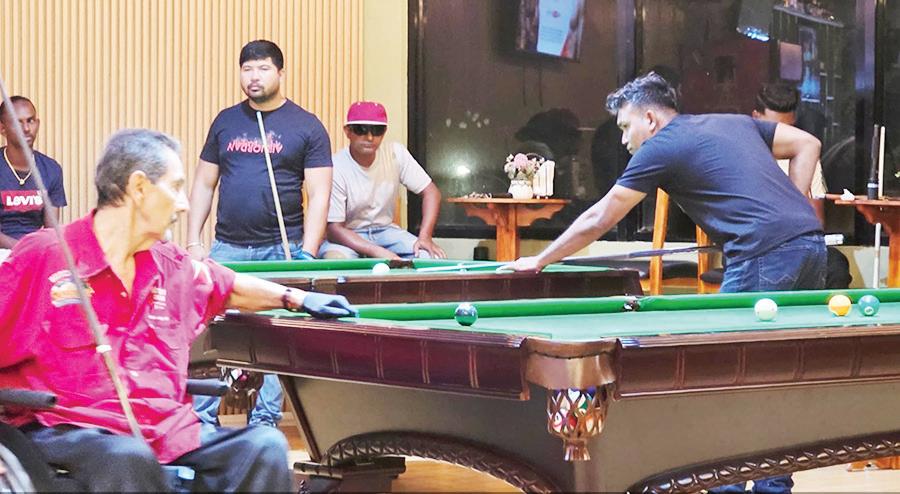
An inaugural champion will be crowned on May 10
The remaining players, who will battle it out for the title, are: Steven Persaud,
The tournament began with 64 participants, all vy-

tent level of competition and development for its national teams.
The initiative is part of a broader strategic plan to keep local talent active and exposed to international basketball environments.
GBF President Michael Singh stated, “This trip, which also serves as a reward for consistent performances during the One Guyana League, provides our players with the opportunity to experience
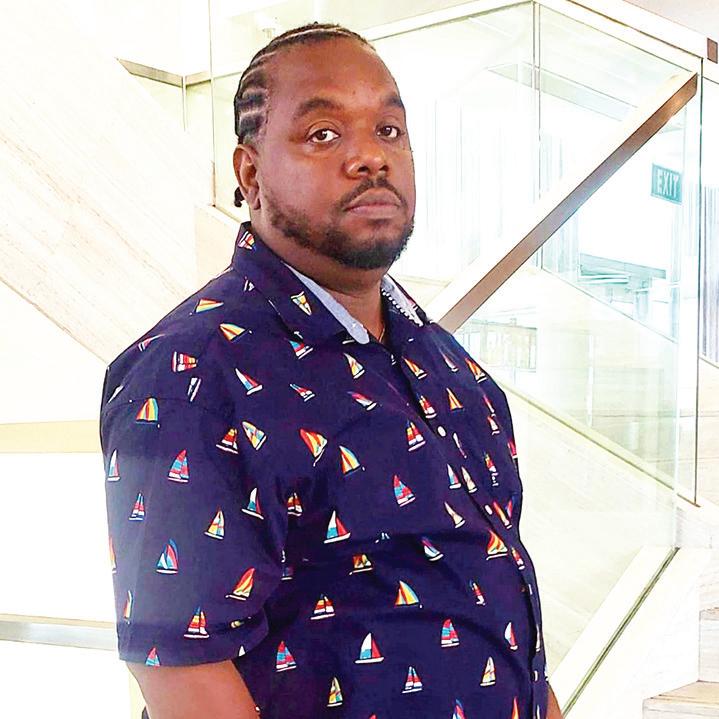
basketball in a new environment and immerse themselves in a different culture.”
He added, “At the same time, we’re using this momentum to refocus our efforts on revitalizing the men’s national programme, with tours like the one to French Guiana serving as incentives for standout performances in the local league.”
Regarding Ramlall’s selection, Singh ex -
plained, “Diaspora talent is essential if we’re going to advance our basketball programme. Anish has demonstrated a genuine interest in contributing to the development of basketball in Guyana. He traveled here, participated in the One Guyana League, and gave us the chance to evaluate his abilities. I believe he impressed the coaching staff, which led to his selection.”
(Wednesday May 07, 2025)
LTD - 83 Garnett Street, Georgetown (Tel:225-6158)
Answers to yesterday’s quiz:
ing to become Guyana’s first-ever national nine-ball champion.
Simextra Trading, the local distributor for Fireball, is the championship’s proud title sponsor.
(1) Chris Gayle-30 balls (RCB vs PWI, 2013. (2) Vaibhav Suryavanshi-35 balls Today’s

